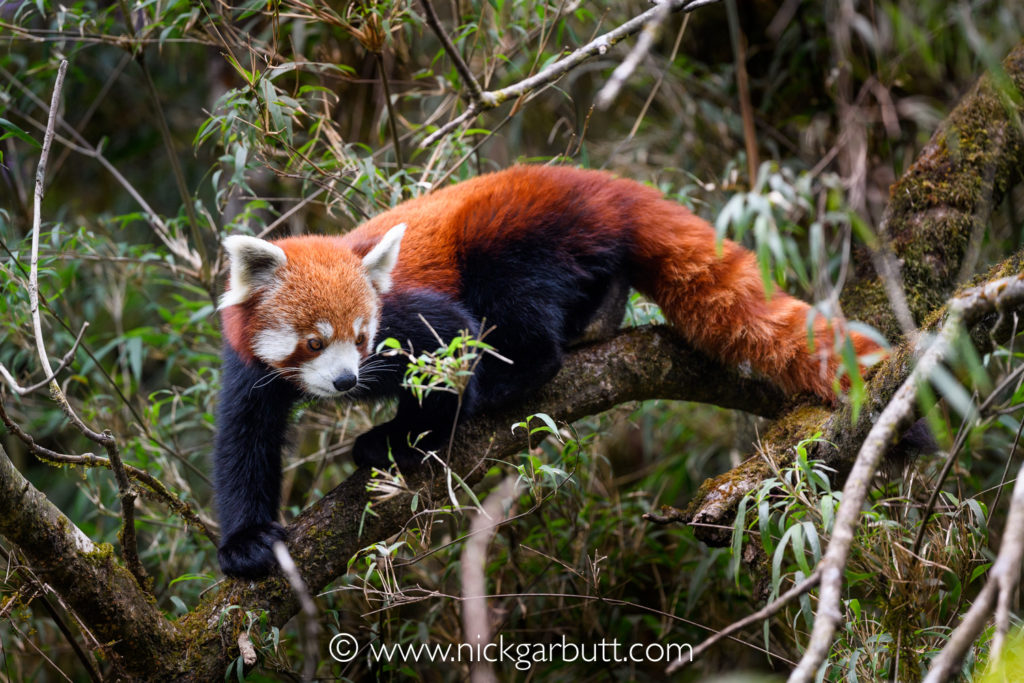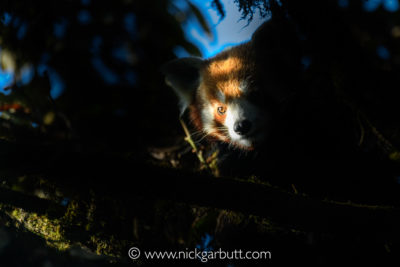Singalila 2018 Recce Trip Report: Worth Pandering Too?

A young red panda in Singalila Forest
We are very fortunate to be around at this time. OK we have to put up with bloody Brexit, buffoons like Boris and Trump and hideous, vacuous TV like Love Island (thank goodness for the off switch), but like no other generation we have the opportunity to indulge in and enjoy wildlife and wild places. Yes there was more wildlife and more wild places remaining for all the generations that preceded us, but they did not have access to relatively cheap global travel: such things were more the privilege of the those with money and influence. While the generations ahead of us that will inherit what ever we leave behind may have technologies that will transport them to far flung places extremely quickly, but will there be anything left to see when they get there?

The temperate montane forest of Singalila are ideal red panda habitat
As we are, there is still an awful lot to celebrate. We still have charismatic species like tigers, polar bears and elephants and there are still considerable areas of rainforest, rugged mountains and extensive grasslands. We know all are under considerable threat from human pressure and will likely disappear unless we act now and wildlife tourism can play its part.
Today nothing is ‘out of reach’. It is possible to get to just about every square metre on the Planet, the only limiting factors being time and the depth of your pocket. When I was growing up in the 1970’s and 80’s the thought of following in Sir David Attenborough’s footsteps to see proboscis monkeys or jaguars, lemurs or macaws was almost unthinkable to me and yet today it is bordering on routine. Even seeing near-mythical species like snow leopards is now within the realms of reality for most people who are willing to put in the time and effort.
Almost as mythical, and still little known, is the red panda, that is restricted to areas of temperate montane forest in the foothills of the Himalayas: areas that are so remote that they have acted as a fortress, preventing access to all, except those with expedition level logistics. Until now that is.

Spectacular views of Kangchenjunga from the Singalila ridge
Singalila National Park in West Bengal, lies in the foothills of the Himalayas and is sandwiched between Nepal and Bhutan. The eponymous ridge is a famous trekking route with regular spectacular views north to Kanchenjunga, the world’s third highest mountain. At middle elevations, the temperate forests provide ideal red panda habitat and the park is known to have a reasonably healthy population. Red pandas are territorial and renowned for being very shy, so countless trekkers that walk along the ridge probably pass through the ranges of a number of individuals and perhaps within striking distance of a panda without ever realising. Certainly, the vast majority of people visiting Singalila National Park do not see a red panda.

An adult red panda: note the darker face
In March 2019, I visited a project that aims to change this, at a very low key level. The modest but comfortable lodge lies at around 2900m elevation and straddles the India / Nepal border. For the past six years staff have been tracking red pandas in the area and they have now identified over 20 different territories, some of which are only a stone's throw away from the lodge. Over time they have been able to habituate several individuals, so providing you behave and conduct yourself appropriately (keep quiet, sit still, no sudden movements) it is possible to get exceptional views of the more tolerant pandas.

A chestnut-crowed laughing thrush close to the lodge
I’d certainly never seen a wild red panda before (I think I’d only ever seen them twice in captivity), so I wasn’t quite sure what to expect. I had five days to find out.
On the first morning I rose with the sun and was quickly outside to experience the fresh mountain air. In the forest areas around the lodge I managed to identify some of the many birds that were unfamiliar: yellow-billed blue magpies were easy, but it took me a little longer to get to grips with several different skulking laughing thrushes (black-faced and chestnut-crowned were the most common). The panda trackers too were out early. My instructions were simple - hang around the lodge until they returned and when they did, they may be able to take me off in the direction of a panda. They blanked on the first morning and by 11am thick cloud had enveloped the ridge and the chances of finding a panda were reduced to zero. I took myself off for a walk along the ridge instead. Of course there were no views, but the cloud shrouded forest was eerily beautiful and layered in mystery.

Bamboo is a major constituent of the red panda diet
Again I was up at dawn the next day and decided to bird watch more intently in an attempt to turn the unfamiliar in to the more familiar. After an hour, I was confident I’d seen and correctly identified numerous species that were new to me. All very gratifying.

A spotted laughing thrush
Then in an instant the atmosphere changed. A panda had been located. It was important to act quickly in case it moved away to somewhere inaccessible. Panic stations. I grabbed my camera bag and we jumped into the Landrover. The journey lasted about three minutes. We got out barely 300m up the hill from the lodge and my guide Mridul gestured for me too follow him down a steep narrow trail into the forest. The understory was thick with bamboo, the pandas main food of course. We stopped no more than 60m down the trail. He told me to wait and then disappeared. Two minutes later he was back and we were off, climbing over one branch, ducking under another, twisting through the tangled forest. We barely moved a further 30m. One of the trackers was just ahead and as I drew closer to him, he pointed up and across. My gaze followed his finger and there it was, sitting on a branch eating bamboo - an adorable, gorgeous, cuddly red panda. All gooey adjectives my scientific training told me I shouldn’t be using, but I couldn’t help it, those were the words that sprang to mind. Red pandas ARE catastrophically cute!

The harsh lighting in the forest canopy can often be challenging for photograph
The red panda remained on its branch, quietly munching its way through bamboo stalks and leaves. It seemed not to care one jot that it was being watched. The encounter lasted at least 15 maybe 20 minutes. I lost track. I didn’t care. Then once the bamboo was finished it moved along the branch, climbed down another and continued through the canopy, but down the steep slope in a way that was impossible to follow. Some of the terrain is rather challenging.
With three further morning sessions, I was hopeful of more encounters and opportunities. And I was not disappointed. The trackers found red pandas each morning and one of these included two delightful young red pandas that were hanging out together in the canopy.
It is not easy to get decent photos. The slopes are steep, the forest is dense and the lighting is often awful, but with perseverance and patience I managed to get a modest selection of images I was delighted with after just five days. Far more importantly, the experience was captivating. On three occasions I’d managed to sit on the forest floor and watch one or two red pandas at very close quarters for well over an hour. It was magical.

Two young red pandas rest together
Red Pandas and Tigers Photography Tour 2021
In November 2019, I will be returning to Singalila, this time with a group, hoping to get further opportunities to see and photograph these endearing animals. The tour is full (and has been for some time), but the intention is to repeat the trip twice in 2021, firstly in March and then again in October. The lodge in Singalila is very small (only four guest rooms), so the group size is limited to just six clients, which means these tours are likely to fill very quickly.
Provisional names are now being taken for these tours. For further information please - click here.
